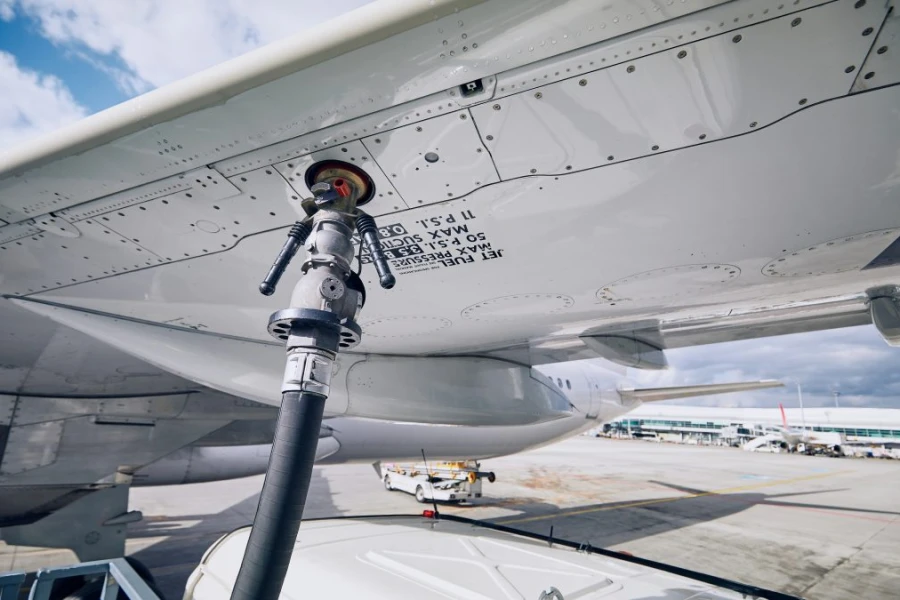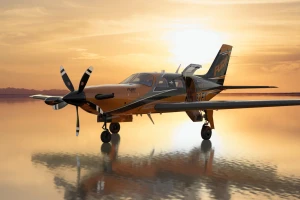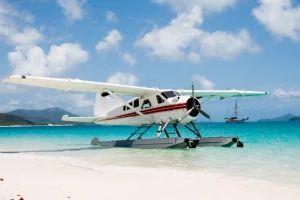- TECHNOLOGY
- 1 year before
Lead-Free Fuel Era for Airplanes in the U.S.
The United States, after automobiles, is now switching to unleaded fuel for airplanes. EAGLE initiative moves aviation fleet to lead-free fuel by 2030
-

- 1 year before
- Category: TECHNOLOGY
- Published: 04/03/2024

Lead-Free Aviation Fuel in the United States
Nearly a half-century since automakers started building cars that run on unleaded gasoline and 16 years after Nascar switched to using unleaded fuel in race cars, general aviation in the U.S. is making steady progress, with some hiccups, toward phasing out leaded avgas.
The U.S. Environmental Protection Agency (EPA) started issuing lead emissions reduction standards in the 1970s and mandated the use of unleaded fuel in passenger cars as of model-year 1975. In its early enforcement of the landmark Clean Air Act, the agency said fuel containing lead could continue being sold for off-road uses in aircraft, race cars, farm equipment and marine engines. Pressured by environmental groups, Nascar switched to unleaded fuel in 2008.
Piston-engine airplanes and helicopters that run on leaded avgas are the largest remaining source of lead emissions into the air, the EPA now says. In October 2023, the agency announced a final determination that lead emissions from aircraft that operate on leaded fuel contribute to air pollution and endanger public health.
The long-anticipated “endangerment finding” triggered separate rulemaking processes: The EPA will develop regulations for lead emissions from aircraft engines, and the FAA will develop standards for the composition and properties of fuel or fuel additives to eliminate lead emissions.
EAGLE Takes Flight
It has been two years since industry associations and the FAA—eyeing efforts by local communities to shut down GA airports over various reasons including lead emissions—announced the Eliminate Aviation Gasoline Lead Emissions (EAGLE) initiative with the stated goal of moving the U.S. piston-engine aircraft fleet to unleaded avgas by 2030 or sooner.
Directed by an executive committee consisting of top leaders of GA industry associations and Lirio Liu, executive director of the FAA Aircraft Certification Service, EAGLE serves an over-arching role in the transition to unleaded avgas. It aims to facilitate not only the development of new unleaded fuels to replace 100 Low Lead (100LL), the most common avgas, but also the production, distribution and supply of those fuels to airports and fixed-base operators (FBO) nationwide.
Nearly all of the roughly 170,000 active piston-engine aircraft in the U.S. burn 100LL containing the fuel additive tetra-ethyl-lead to boost octane rating, according to the Transportation Research Board (TRB). Aircraft with higher-performance, high-compression piston engines consume about 70% of the supply, the industry says.
Airports and FBOs must maintain a supply of 100LL until a 100-octane unleaded fuel becomes commercially available, EAGLE’s principals say, to ensure that the aircraft engines that require it continue to operate safely and to protect the economic viability of the industry. The EPA’s lead emissions endangerment finding did not ban the sale of 100LL, they emphasize.
“We’ve all aligned that we have to do this,” says National Air Transportation Association (NATA) President and CEO Curt Castagna, who serves as the EAGLE industry co-chair. “We’re in this transitionary stage,” he adds. “We have to protect the 100LL, we have to protect the national airspace system and at the same time we have to show progress in the evolution to phase out 100LL. What we need is a continued rationale approach.”
In December 2023, Alaska’s U.S. Senators Lisa Murkowski and Dan Sullivan, both Republicans, introduced a resolution in Congress seeking to prevent EPA regulation of aircraft engine lead emissions. Such a regulation “ignores Alaska’s unique geographic reliance on aviation and will cause real harm to indigenous and rural communities across the state by potentially increasing fuel costs and impacting flight availability,” the senators said.
Rather than detracting from its mission, the case made by lawmakers from Alaska underscores EAGLE’s argument that the transition to unleaded avgas must be done carefully, Castagna says.
“Different places in the country have different needs relative to avgas,” he says. “In Alaska and Hawaii, it’s critical to their way of life and how aircraft are used in their economies. That’s not to minimize communities’ concerns over the impact of lead, but the movement of people and goods in Alaska is a primary responsibility. We have to look at this from a national perspective.”
Unveiled in public in February 2022, EAGLE helped reboot what had been a prolonged, FAA-led research and testing program, called the Piston Engine Aviation Fuels Initiative (PAFI), to qualify a high-octane unleaded avgas that could work across the wide variety of piston aircraft and engines. The FAA established PAFI in 2014; in November 2023, the agency announced that a first unleaded fuel candidate had successfully passed PAFI’s initial detonation and 150-hr. engine durability test phase.
The UL100E candidate fuel, developed by a consortium of VP Racing Fuels and chemical company LyondellBasell, has advanced to full-scale engine and airframe testing on 10 engines and eight aircraft, which is expected to take 12-18 months. VP Racing Fuels has said that it completed engine durability testing of the fuel on a turbocharged Continental piston engine. Plans called for using a mixed engine fleet to include participation by Lycoming Engines during full-scale testing.
Even as UL100E moved to full-scale testing, though, work on a second fuel being evaluated under PAFI was suspended. Testing of 100M, a high-octane unleaded avgas developed by Phillips 66 and Afton Chemical, “has been paused due to issues encountered during durability testing,” the FAA said in January 2024.
Phillips 66 issued a statement with similar language. “We can confirm that PAFI evaluation has been paused on the Phillips 66/Afton Chemical 100M unleaded fuel,” the energy company said. “Phillips 66 is committed to its vision of developing an unleaded aviation fuel offering and is currently evaluating this product’s development and all viable alternative options.”
Data from the PAFI testing supports development of an industry-consensus production specification by standards organization ASTM International—key for commercialization of a new product. Once a fuel completes the PAFI regimen and ASTM publishes a production specification, GA associations expect the FAA will issue a fleetwide authorization to allow its use across the range of piston-engine aircraft.
In December 2023, VP Racing Fuels announced that it has formed a new company, VP Aviation, to commercialize high-octane unleaded avgas. The motorsport fuel developer based in San Antonio projects annual demand to the tune of 300 million gal. for avgas worldwide. It did not respond to interview requests.
The advance of UL100E through the PAFI process lags FAA approval of another high-octane unleaded fuel through the agency’s supplemental type certification (STC) process. In September 2022, the FAA authorized most piston aircraft and engine models to use General Aviation Modification Inc.’s (GAMI) G100UL avgas. Pilots will be able to pump it by acquiring aircraft STCs costing in the hundreds of dollars based on the aircraft’s engine and horsepower.
A small engineering company known for developing precision fuel injectors and aftermarket turbochargers, GAMI started work on an unleaded avgas in 2009 and years later passed on joining the industry-government PAFI program. By pursuing FAA authorization through the STC process, its fuel recipe has remained proprietary and has not undergone peer review through ASTM. GAMI has made quantities of G100UL available for testing to aircraft and engine manufacturers that sign non-disclosure agreements.
Last October, Aircraft Owners and Pilots Association (AOPA) President Mark Baker, who preceded Castagna as EAGLE industry co-chair, flew a twin-engine Beechcraft Baron demonstration airplane with one engine running on G100UL to kick off an AOPA evaluation of new unleaded fuels.
GAMI has arranged with Vitol, a blending company in Houston, to produce G100UL by this spring, GAMI co-founder George Braly tells BCA. He understands that Vitol is in discussions with avgas distributors to establish a distribution network.
Dual Pathways Spark Debate
GAMI’s maverick status and the proprietary STC pathway to high-octane unleaded avgas have sparked a debate in the industry, with some trade groups expressing a preference for an industry-consensus fuel specification that has been vetted through the ASTM process.
“The paramount rule in this is that [fuels] are safe and we have to prove that to the FAA,” General Aviation Manufacturers Association President and CEO Pete Bunce told reporters in June 2023. “The way we have done this is we have had known fuels [that] we have been able to certify and test against this standard and that standard has been given to us by ASTM.”
The EAGLE position, Castagna says, is that it supports GAMI’s effort to organize a production and distribution network for G100UL, but that the market ultimately will decide which fuels make it to aircraft wings.
“The question of whether or not we’re going to have multiple fuels at the end of the day is not a decision that EAGLE makes,” Castagna says. “We know there’s 180 million gal. or so of avgas sold annually. Is there room for multiple





Write Comment